In recent years, we’ve seen the addition of more advanced techniques including robotic integration of these methods and the use of long-range UT for the inspection of piping systems – all of which makes ship inspection more reliable and productive. Since vessels must undergo a special assessment every five years to maintain international registration and insurance -including the survey of all deck plating as well as the exposed superstructure- dedicated, faster and more cost-efficient solutions are always being sought after.
Figure 1: Eddyfi Technologies Magnetic Robotic Crawler Performs Remote Visual Inspection of External Ship Hull
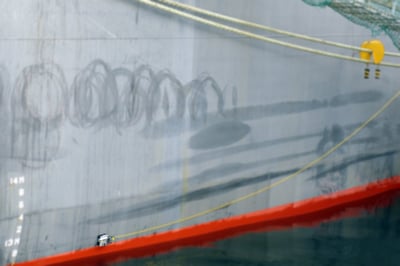
Figure 2: Automated UT corrosion mapping system deployed on ship hull
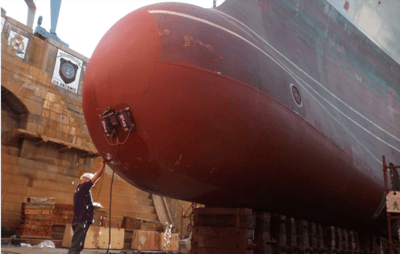
Figure 3: Sonyks™ (formerly Focus™) guided wave system screens onboard pipework for corrosion damage
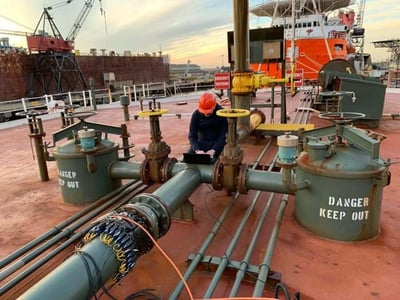
The inspection of deck plates using traditional NDT methods has been problematic until very recently. Despite having a tendency to weaken due to corrosion, ship deck plates are not only important structural elements of a vessel, but also what the crew and passengers blindly rely on for direct safety. Ship deck plate inspection is particularly challenging because the plates are almost entirely hidden with floor coverings through which traditional NDT methods can’t ‘’see’’. This is one reason why minimum inspection requirements, based on these restrictions, is limited to only exposed portions of deck plates. Inspectors must rely on detecting any compromising corrosion where the data points are being collected. To fully understand their condition using traditional NDT techniques, the deck plates need to be made accessible by removing the floor coverings – a work intensive task. In the case of cruise ships or luxury yachts, this involves the destruction of high value floor coverings. What’s worse? Most unveiled surfaces have no corrosion which translates into a significant setback given the massive amount of scrapped material and considerable time lost for an out-of-service vessel. These types of inspections are budgeted based on surface area without knowing where a defect may be located, an inefficient approach that’s ready for a better solution.
We’ve got good news! For a significant number of years, Eddyfi Technologies has been perfecting pulsed eddy currents, or PEC, an NDT technique suitable for detecting and sizing wall loss due to corrosion through any kind of surface, like the ones found on ship floors. This technology recently caught the attention of key players in the naval industry for its high relevance in the inspection of deck plating specifically. The prospect of performing more efficient in-service inspections without needing to remove floor coverings like anti-slip epoxy coatings, tiles, carpets and wood decking is accepted as a high-value replacement of the customary measures.
While very promising, the applicability of PEC needed to be verified; therefore, a comprehensive feasibility study was conducted on a set of floor samples extracted from a decommissioned ship1. The samples consisted of deck plating ranging from 5 to 9 millimeters, floor coverings ranging from 2 to 25 millimeters, and all the typical underlying structural features. The results obtained during this study and various other field trials undeniably proved the value of PEC for this application and justified the development of an application-specific solution just released.
Eddyfi Technologies recently developed a dedicated PEC ship floor inspection solution (Figure 4) comprised of a 7-channel, small footprint probe able to cover 178 millimeters (7 inches) in a single pass and accurately determine the remaining wall thickness of carbon steel deck plates through floor coverings up to 38.1 millimeters (1.5 inches) including vinyl, ceramic, terracotta tiles, among others. A pole adapted to the probe enables inspection from a comfortable standing position. The expert solution is compatible with the field-proven Lyft®: a state-of-the-art portable, rugged and battery-operated PEC instrument that provides real-time C-scan imaging and up to 15 readings per second for a fast and encoded scan.
Figure 4: PEC ship floor inspection solution: Eddyfi Technologies pulsed eddy current probe with Lyft® software and instrument
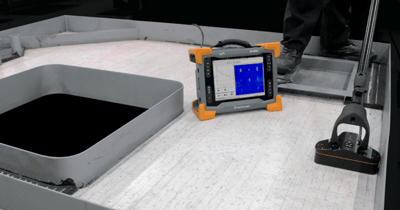
Using our Surface Pro 3D reporting software (Figure 5), data collected can be overlaid on 2D or 3D drawings to provide a clear view of the floor, features and defective areas of the inspected structure.
Figure 5: Surface Pro 3D report showing the inspected floor features, obstructions and defective areas
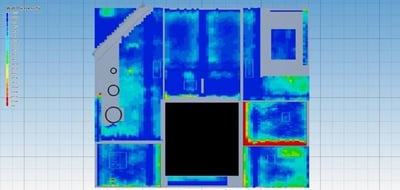
The ingenuity and unique offering of this advanced solution solves a common problem for most ship operators, providing a reliable, economical and non-intrusive picture of the structural integrity of ship deck plates. This not only makes code compliance a breeze, but also makes it possible to better target areas requiring maintenance, ultimately alleviating budgets while minimizing ship repair and refurbishing costs.
Long gone are the days of only being able to perform a sample integrity assessment on exposed deck plates or damaged floor coverings, hoping that any corrosion captured is the whole picture. New technologies enable proactive management decisions that go above and beyond minimum inspection requirements to keep your fleet afloat. Transitioning to new high-tech alternatives allows quick and clear mapping of all deck plates in an economical and non-intrusive manner. This is proficient for improving safety culture and the only way to really know what you’re walking on, staying Beyond Current.





